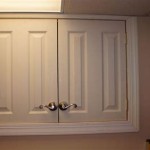How To Install Interior Stair Railing
Installing interior stair railing is a significant home improvement project that enhances safety, adds aesthetic appeal, and can potentially increase property value. A well-installed railing provides a secure handhold for ascending and descending stairs, mitigating the risk of falls. The process, while seemingly straightforward, requires careful planning, precise measurements, and the use of appropriate tools and materials to ensure structural integrity and compliance with local building codes.
Before initiating the installation, it is crucial to familiarize oneself with the relevant building regulations and acquire the necessary permits. These regulations often dictate specific height requirements, spacing between balusters, and load-bearing capacity. Ignoring these regulations can result in costly revisions and potential legal issues upon inspection. Furthermore, a thorough assessment of the existing staircase and surrounding structure is essential to identify any potential challenges or limitations.
This article provides a comprehensive guide to installing interior stair railing, covering key aspects from material selection to final finishing. It aims to equip homeowners and DIY enthusiasts with the knowledge and practical steps necessary to undertake this project successfully.
Key Considerations Before Installation
Prior to commencing the physical installation, several crucial considerations must be addressed to ensure a smooth and successful project. These include material selection, accurate measurements, and code compliance.
Material Selection: The choice of materials for the stair railing significantly impacts the overall aesthetic and durability of the installation. Common materials include wood, metal (such as wrought iron or stainless steel), and composite materials. Wood offers a classic and warm appearance, lending itself to various design styles, but requires regular maintenance to prevent warping and cracking. Metal railings provide a more modern and sleek look, known for their strength and longevity, but may be more susceptible to corrosion in humid environments. Composite materials offer a balance of durability and low maintenance, mimicking the appearance of wood or metal without the associated drawbacks. The selection should be based on the desired aesthetic, budget, and the level of maintenance the homeowner is willing to undertake.
Accurate Measurements: Precise measurements are paramount to a successful stair railing installation. Incorrect measurements can lead to gaps, misalignment, and structural instability. Before ordering materials, carefully measure the total length of the staircase, the vertical distance from the floor to the desired railing height, and the angle of the staircase. These measurements will determine the length of the railing, the height of the posts, and the angle at which the railing must be cut to align with the staircase. It is advisable to double-check all measurements and account for any potential inaccuracies.
Code Compliance: Adherence to local building codes is non-negotiable. Stair railing regulations typically specify minimum and maximum railing heights, the maximum spacing between balusters (to prevent children from squeezing through), and the required load-bearing capacity of the railing. Failure to comply with these codes can result in failed inspections and the need for costly rework. Before starting the project, consult with your local building department or a qualified building inspector to understand the specific requirements applicable to your area. These requirements often vary depending on the type of occupancy (residential, commercial, etc.) and the location of the staircase within the building.
Step-by-Step Installation Process
Once the preliminary considerations have been addressed, the physical installation process can commence. This involves securing the newel posts, attaching the railing, and installing the balusters.
Securing the Newel Posts: Newel posts are the foundation of the stair railing system, providing structural support and anchoring the railing. They are typically located at the top and bottom of the staircase, and potentially at intermediate points depending on the length of the staircase. The method of securing the newel posts depends on the type of staircase and the construction of the floor and stair treads. For wood staircases, newel posts can be attached using lag screws or threaded rods that pass through the stair treads and are secured to the framing below. For concrete staircases, specialized anchoring systems or epoxy adhesives may be required. It is crucial to ensure that the newel posts are plumb and securely fastened, as they will bear the full weight of the railing and any applied force. The use of shims may be necessary to ensure that the posts are perfectly vertical before tightening the fasteners. After securing them, test the stability of each post to verify that there is no movement or wobble.
Attaching the Railing: With the newel posts firmly in place, the railing can be attached. The railing is typically secured to the newel posts using screws, bolts, or specialized railing connectors. The specific method depends on the materials of the railing and newel posts, as well as the desired aesthetic. For wood railings, screws and plugs can be used to create a seamless and aesthetically pleasing connection. For metal railings, welding or bolting are common methods. It is imperative to ensure that the railing is level and aligned with the staircase. A laser level can be helpful in achieving accurate alignment. Before permanently attaching the railing, it is advisable to dry-fit it to ensure proper fit and alignment. Any necessary adjustments should be made before securing the railing in place. The railing should be attached to the posts at multiple points along its length to distribute the load and prevent sagging. The use of appropriate fasteners and techniques is essential to ensure that the railing is securely attached and meets the required load-bearing capacity.
Installing the Balusters: Balusters are the vertical supports that fill the space between the railing and the stair treads, providing safety and preventing falls. The spacing between balusters is typically dictated by building codes, with a maximum spacing of four inches to prevent children from squeezing through. Balusters can be attached to the railing and stair treads using screws, nails, or adhesive. The specific method depends on the type of balusters and the materials of the railing and stair treads. For wood balusters, screws or nails are commonly used. For metal balusters, welding or bolting may be required. It is crucial to ensure that the balusters are evenly spaced and plumb. A spacing jig can be helpful in achieving consistent spacing. Before permanently attaching the balusters, it is advisable to dry-fit them to ensure proper fit and alignment. Any necessary adjustments should be made before securing the balusters in place. The balusters should be attached securely to both the railing and the stair treads to prevent movement or loosening over time.
Finishing and Final Inspection
After the railing has been installed, the final steps involve finishing the railing to protect it from the elements and enhance its aesthetic appeal, and conducting a thorough inspection to ensure that the installation meets all safety requirements and building codes.
Finishing the Railing: The finishing process depends on the materials of the railing and the desired aesthetic. For wood railings, staining and sealing are common steps. Staining enhances the natural grain of the wood and provides a protective layer against moisture and wear. Sealing provides a smooth and durable finish that is resistant to scratches and stains. For metal railings, painting or powder coating is often used to protect the metal from corrosion and provide a decorative finish. The choice of finish should be based on the desired aesthetic, the level of protection required, and the ease of maintenance. Before applying the finish, it is important to prepare the surface by sanding or cleaning it to remove any dirt or debris. The finish should be applied in thin, even coats, following the manufacturer's instructions. Multiple coats may be necessary to achieve the desired level of protection and appearance. Allow the finish to dry completely between coats to prevent runs or drips. After the finish has dried, it may be necessary to lightly sand the surface to remove any imperfections.
Final Inspection: Once the finishing process is complete, a thorough inspection should be conducted to ensure that the installation meets all safety requirements and building codes. This inspection should include checking the railing height, the spacing between balusters, the stability of the newel posts, and the overall structural integrity of the railing. The railing should be free of any sharp edges or protrusions that could pose a safety hazard. The railing should be able to withstand the required load-bearing capacity without flexing or bending. If any issues are identified during the inspection, they should be addressed immediately to ensure that the railing is safe and compliant. It is advisable to have the installation inspected by a qualified building inspector to ensure that it meets all applicable codes and regulations. A successful inspection will provide peace of mind and ensure that the stair railing will provide years of safe and reliable service.
The installation of interior stair railing is a project that demands precision, attention to detail, and a thorough understanding of building codes. By following these steps and adhering to best practices, homeowners can successfully install a stair railing that enhances the safety, beauty, and value of their home.

Installing Stair Railings Jlc

Install A New Stair Handrail Diy

How To Install Stair Railing At Home With Ashley

Install A New Stair Handrail Diy

How To Install Handrail And Stair Spindles Staircase Renovation Ep 4 Finish Carpentry

How To Install A Wooden Handrail On Split Level Stairs Lemon Thistle

How To Install A Wooden Handrail On Split Level Stairs Lemon Thistle

How To Install Stair Railing At Home With Ashley

Diy Stairway Upgrade Transforms Home Interiors L J Smith Stair Systems

Installing A New Stair Rail Diy Railing Installation Guide
Related Posts








